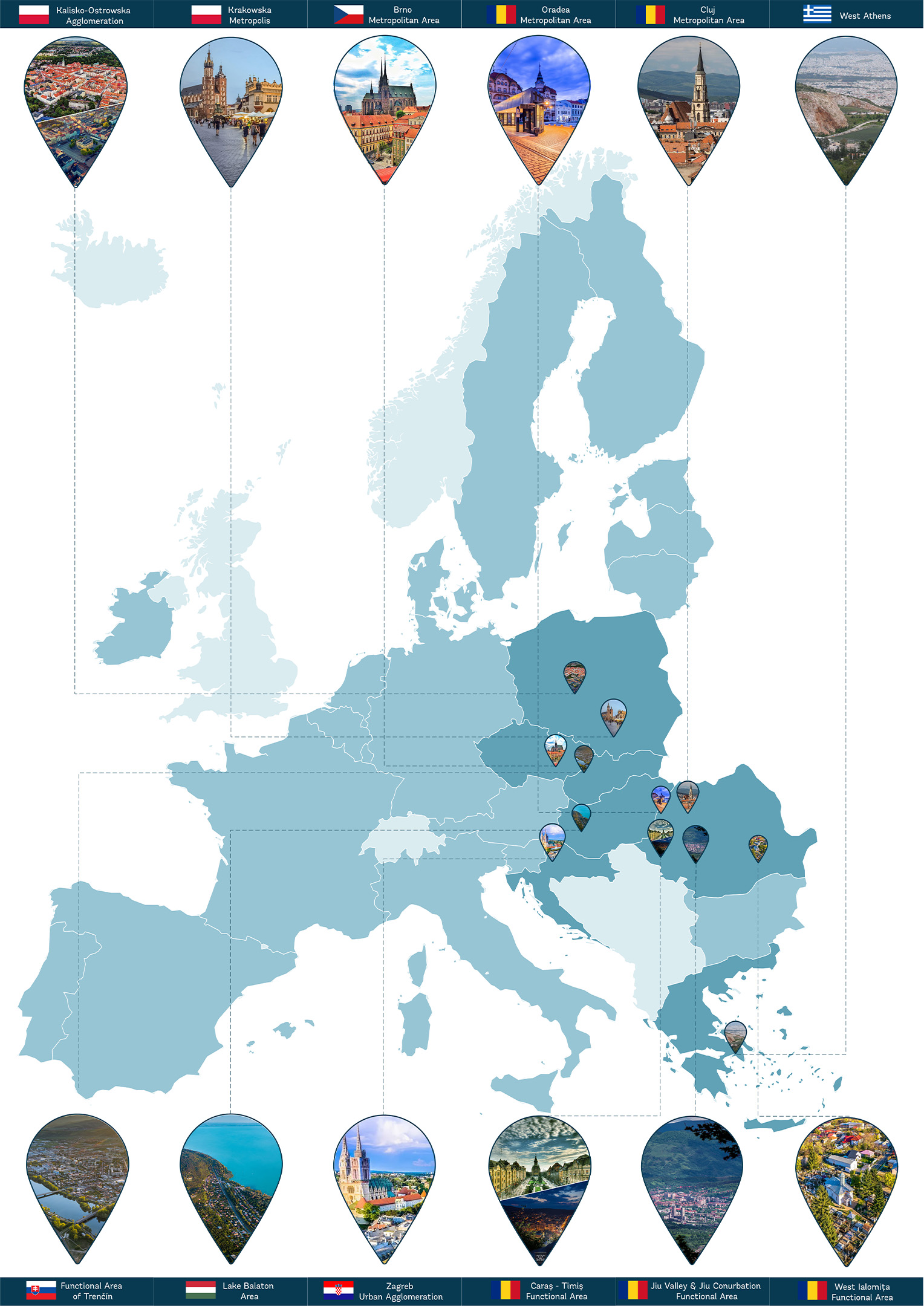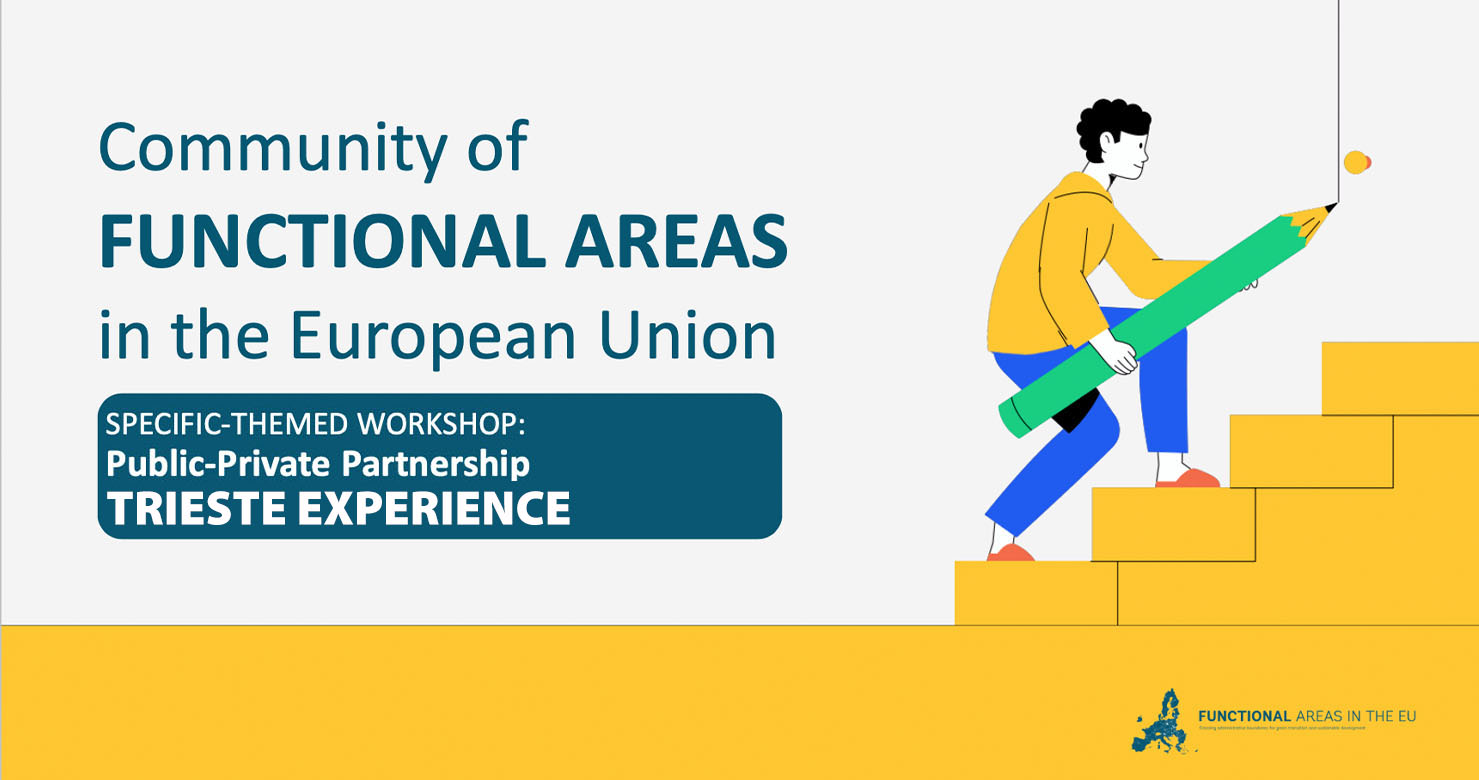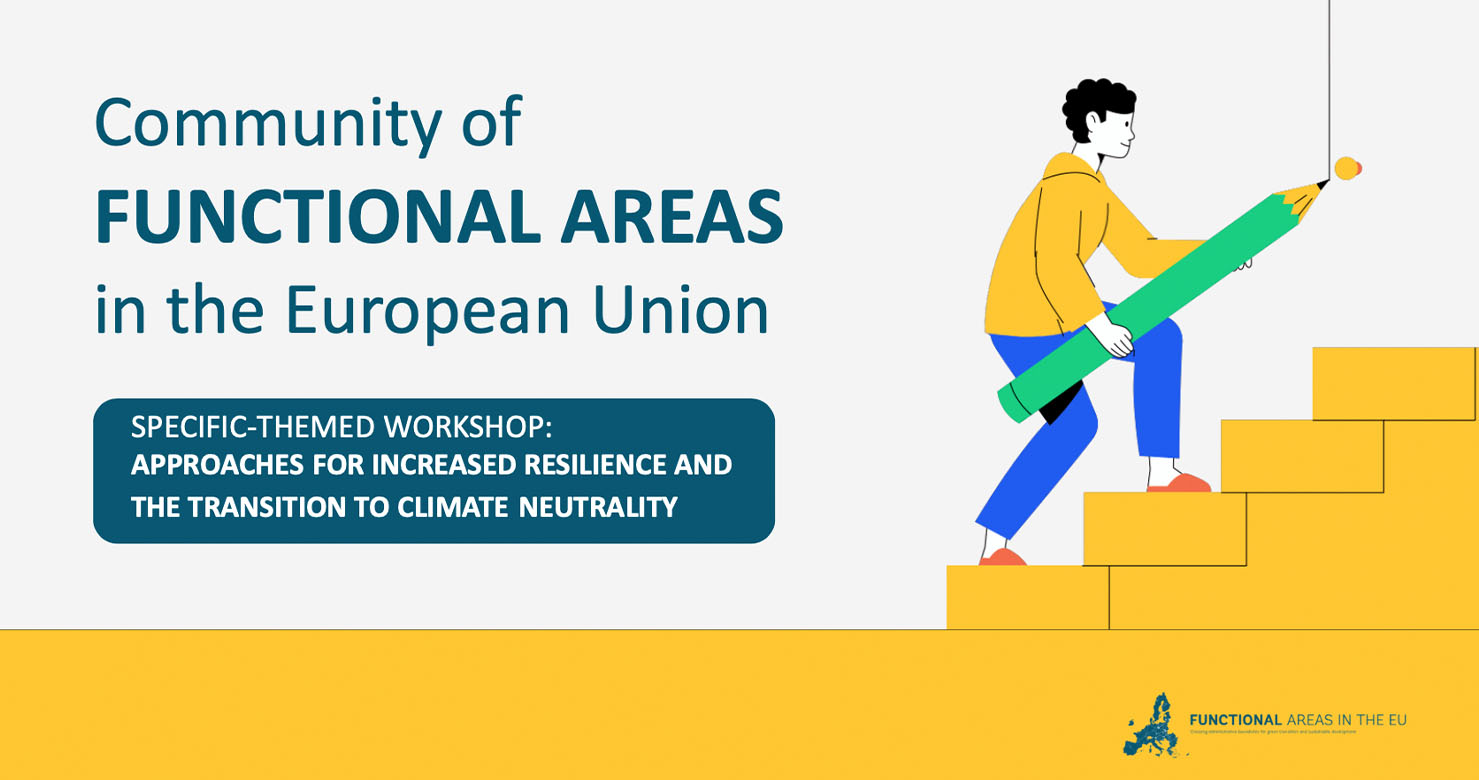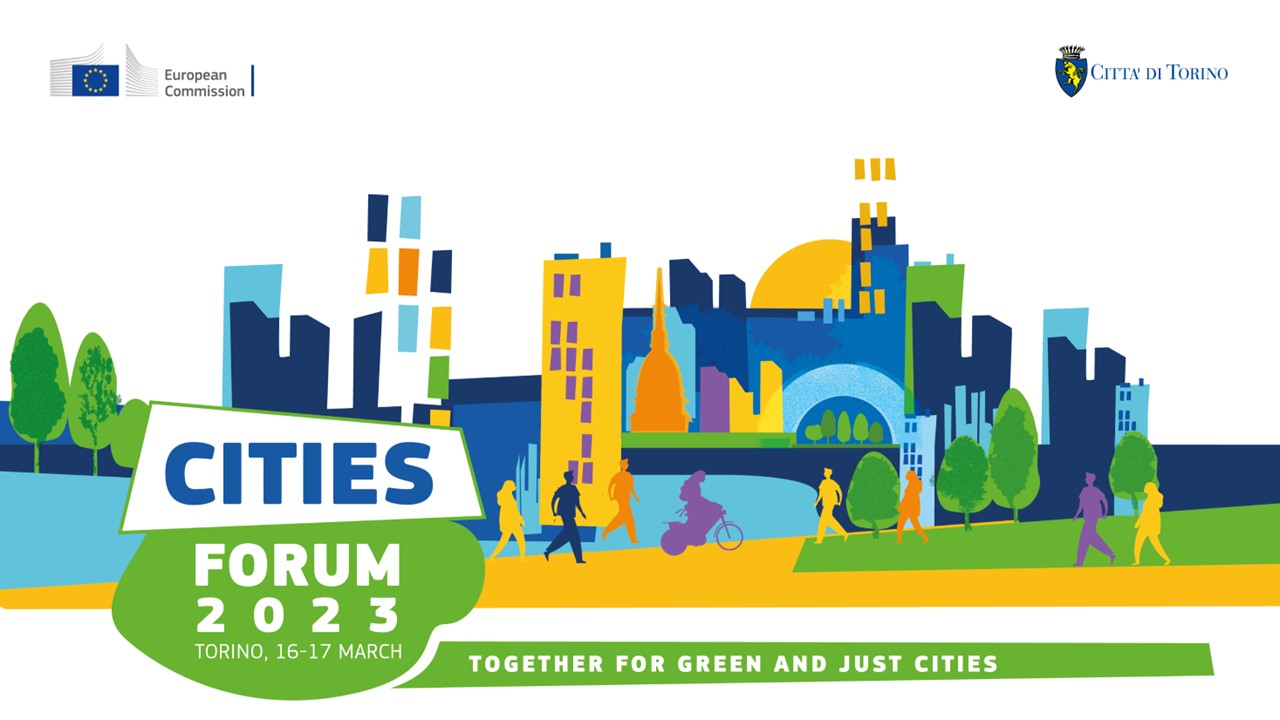Functional areas in the EU
Functional areas in the EU
Crossing administrative boundaries for green transition and sustainable development
About
About
THE PROJECT
Starting from the understanding that functional area approaches in the EU need to be strengthened and the advantages that they trigger can no longer remain untapped, the European Commission and the World Bank Group signed an administration agreement to improve functional area approaches in the EU. Both institutions have as priorities to reduce poverty and social exclusion and create competitive and sustainable economies, in consequence, direct interaction is beneficial to them and to the beneficiary countries. As such, the functional areas in the EU, crossing administrative boundaries for green transition and sustainable development project is of utmost importance for the future of territorial development in the EU.
Its main objective is to enhance the capacity of participating functional areas to plan and finance investments and services across jurisdictional boundaries for sustainable development.
Overall, this transactional exercise focuses on both urban and non-urban functional areas, with the aim to:
- offer support in addressing key development challenges;
- offer support in preparing for the 2021-2027 Programming Period;
- disseminate the key lessons learned, as well as tools and approaches developed within the project to other functional areas;
- develop a toolkit that other functional areas could use to strengthen their territorial approaches;
- organise knowledge exchange events in order to transfer findings and workable solutions to other interested functional areas in the EU.
Why Functional Areas?
Why Functional Areas?
Development dynamics rarely follow neat administrative boundaries. It can trigger positive spillover effects if aligned with existing economic flows into such areas.
The EU cohesion policy encourages the identification of and support to existing functional areas and the formation of territorial cooperation.
The role of the project is to enhance coordination and cooperation across administrative boundaries and develop an EU toolkit to overcome fragmentation.
The journey
The journey
THE TWELVE FUNCTIONAL AREAS FROM SEVEN EU COUNTRIES
The twelve functional areas were selected out of a pool of fifty functional areas from eight member states that applied to be part of the project. This selection contains both more mature and incipient functional areas, as well as urban and non-urban functional areas.
Project updates
Project updates
The Knowledge Exchange on Foreign Direct Investments and Entrepreneurship Support for Functional Areas
KNOWLEDGE EXCHANGE: FAs IN THE EU Takeaways from the Knowledge Exchange on Foreign Direct Investments and Entrepreneurship Support for Functional Areas Discover the main [...]
The Knowledge Exchange on Capacity Building for Functional Areas
KNOWLEDGE EXCHANGE: FAs IN THE EU Takeaways from the Knowledge Exchange on Capacity Building for Functional Areas Discover the main insights from our workshop [...]
The Knowledge Exchange on Public-Private Partnership: Trieste Experience
KNOWLEDGE EXCHANGE: FAs IN THE EU Takeaways from the Knowledge Exchange on Public-Private Partnership: Trieste Experience Discover the main insights from our workshop on [...]
The Knowledge Exchange on Public-Private Partnership
KNOWLEDGE EXCHANGE: FAs IN THE EU Takeaways from the Knowledge Exchange on Public-Private Partnerships Discover the main insights from our workshop on [...]
Showcasing success: Best Practices from “Functional Areas in the EU” Project at the EUI Event on “Fostering the Development of Functional Urban Areas in Hungarian Cities”
Functional Areas in the EU Best Practices at the EUI Event Showcasing Success: Best Practices from “Functional Areas in the EU” Project at the [...]
Functional Areas in the EU participated in the World Lake Conference (Balatonfuered)
World Lake Conference (Balatonfuered) Functional Areas in the EU participated in the World Lake Conference (Balatonfuered) The 19th World Lake Conference (November 7-9, 2023) took [...]
The Lake Balaton Gastro Map: Fostering Growth through Cooperative Gastronomic Tourism
The Lake Balaton Gastro Map The Lake Balaton Gastro Map: Fostering Growth through Cooperative Gastronomic Tourism The Lake Balaton Functional Region is increasingly promoting [...]
Integrated Shoreline Management in the Lake Balaton Functional Region
Integrated Shoreline Management in the Lake Balaton Functional Region Lake Balaton Functional Region: Harmonising Economic, Social, and Environmental Interests through Integrated Shoreline Management and [...]
Knowledge Exchange on Approaches for Increased Resilience and the Transition to Climate Neutrality
KNOWLEDGE EXCHANGE: FAs IN THE EU Takeaways from the The Knowledge Exchange on Approaches for Increased Resilience and the Transition to Climate Neutrality [...]
Empowering Jiu Valley Functional Area: Awards for Urban Renewal, Inclusivity, and Community Engagement Progress
Empowering Jiu Valley Functional Area Empowering Jiu Valley Functional Area: Awards for Urban Renewal, Inclusivity, and Community Engagement Progress As a participant in the [...]
TAIEX-REGIO Study Visit between Krakow and Cluj Metropolitan Areas
TAIEX-REGIO Study Visit between Krakow and Cluj Metropolitan Areas TAIEX-REGIO Study Visit between Krakow and Cluj Metropolitan Areas The knowledge exchange between the Krakow [...]
The Knowledge Exchange on Strengthening Urban-Rural Links
KNOWLEDGE EXCHANGE: FAs IN THE EU Takeaways from the Knowledge Exchange on Strengthening Urban-Rural Links for the Functional Areas in the EU Discover [...]
Knowledge Exchange on Improving the Competitiveness of Functional Areas in the EU
KNOWLEDGE EXCHANGE: FAs IN THE EU Takeaways from the Knowledge Exchange on improving the competitiveness of functional areas in the EU Discover the main [...]
TAIEX-REGIO Study Visit between Barcelona and Zagreb
TAIEX-REGIO Study Visit between Barcelona and Zagreb TAIEX-REGIO Study Visit between Barcelona and Zagreb The Centre de Cultura Contemporània de Barcelona (CCCB) [...]
TAIEX-REGIO Study Visit between Krakow Metropolitan Area and Cluj Metropolitan Area
TAIEX-REGIO Study Visit between Krakow Metropolitan Area and Cluj Metropolitan Area Advancing Integrated Metropolitan Development: TAIEX-REGIO Study Visit between Krakow Metropolitan Area and Cluj Metropolitan [...]
Knowledge Exchange on Approaches to Strengthening Functional Area Governance
KNOWLEDGE EXCHANGE: FAs IN THE EU Takeaways from the Knowledge Exchange on Approaches to Strengthening Functional Areas Governance Discover the main insights from our [...]
Cities Forum 2023
CITIES FORUM 2023 Functional Areas in the EU: from Cohesion Policy to Practice On March 17th, the 5th edition of the Cities [...]
Knowledge Exchange on Identification of Flagship Projects and Funding Opportunities
KNOWLEDGE EXCHANGE: FAs IN THE EU Takeaways from the Knowledge Exchange on Identification of Flagship Projects and Funding Opportunities Discover the main insights from [...]
TAIEX-REGIO Study Visit between West Athens and Bucharest’s District 6
TAIEX-REGIO Study Visit between West Athens and Bucharest's District 6 Accelerating social inclusion, integration and innovation by capitalizing on European funding sources On the [...]
Knowledge Exchange on Land Suitability Analysis
KNOWLEDGE EXCHANGE: FAs IN THE EU Takeaways from the Knowledge Exchange on Land Suitability Analysis Workshop Take a moment to find out the [...]
Knowledge Exchange on Metropolitan Development between Oradea and Brno
TAIEX-REGIO Study Visit between Oradea & Brno Knowledge Exchange on Metropolitan Development between Oradea and Brno 2023 has started with exciting activities for Oradea and [...]
FAs in the EU featured in the ESPON magazine
FAs IN THE EU FEATURED IN THE ESPON TERRITORIAL MAGAZINE We need to share this with you The Functional Areas in the [...]
Kick-off meeting for organizing knowledge exchange activities
KICK-OFF MEETING: FAs IN THE EU The kick-off meeting for organization of knowledge exchange activities for functional areas participating in the “Functional areas in the [...]
The Functional Area Approaches 101 Workshop
EUROPEAN WEEK OF REGIONS AND CITIES Summary and take away ideas Watch the “Functional Approaches 101: How to cooperate across municipal boundaries?” workshop [...]
Share your experience
Share your experience
CITIZENS:
Are you living in one of the following functional areas: Brno Metropolitan Area, Zagreb Urban Agglomeration, West Athens, Lake Balaton Area, Kalisko-Ostrowska Agglomeration, Metropolia Krakowska, Jiu Valley and Jiu Conurbation, Caraș-Timiș Functional Area, Cluj Metropolitan Association, Oradea Metropolitan Area, West Ialomița Area, Trencin?
If yes, now is the time to take part into the process of creating its future and make your voice heard! You just need to share a challenge and a possible solution (if you have it).
Are you living in one of the following functional areas: Brno Metropolitan Area, Zagreb Urban Agglomeration, West Athens, Lake Balaton Area, Kalisko-Ostrowska Agglomeration, Metropolia Krakowska, Jiu Valley and Jiu Conurbation, Caraș-Timiș Functional Area, Cluj Metropolitan Association, Oradea Metropolitan Area, West Ialomița Area, Trencin?
If yes, now is the time to take part into the process of creating its future and make your voice heard! You just need to share a challenge and a possible solution (if you have it).
DECISION-MAKERS FAs:
If you represent one of the above-mentioned functional areas, or any other functional area in the European Union, use the “FAs Network” button to join a newly created network to create synergies, learn from each other, and improve functional area approaches inside the EU by exchanging knowledge.
Be a part of the network.
If you represent one of the above-mentioned functional areas, or any other functional area in the European Union, use the “FAs Network” button to join a newly created network to create synergies, learn from each other, and improve functional area approaches inside the EU by exchanging knowledge.
Be a part of the network.



















